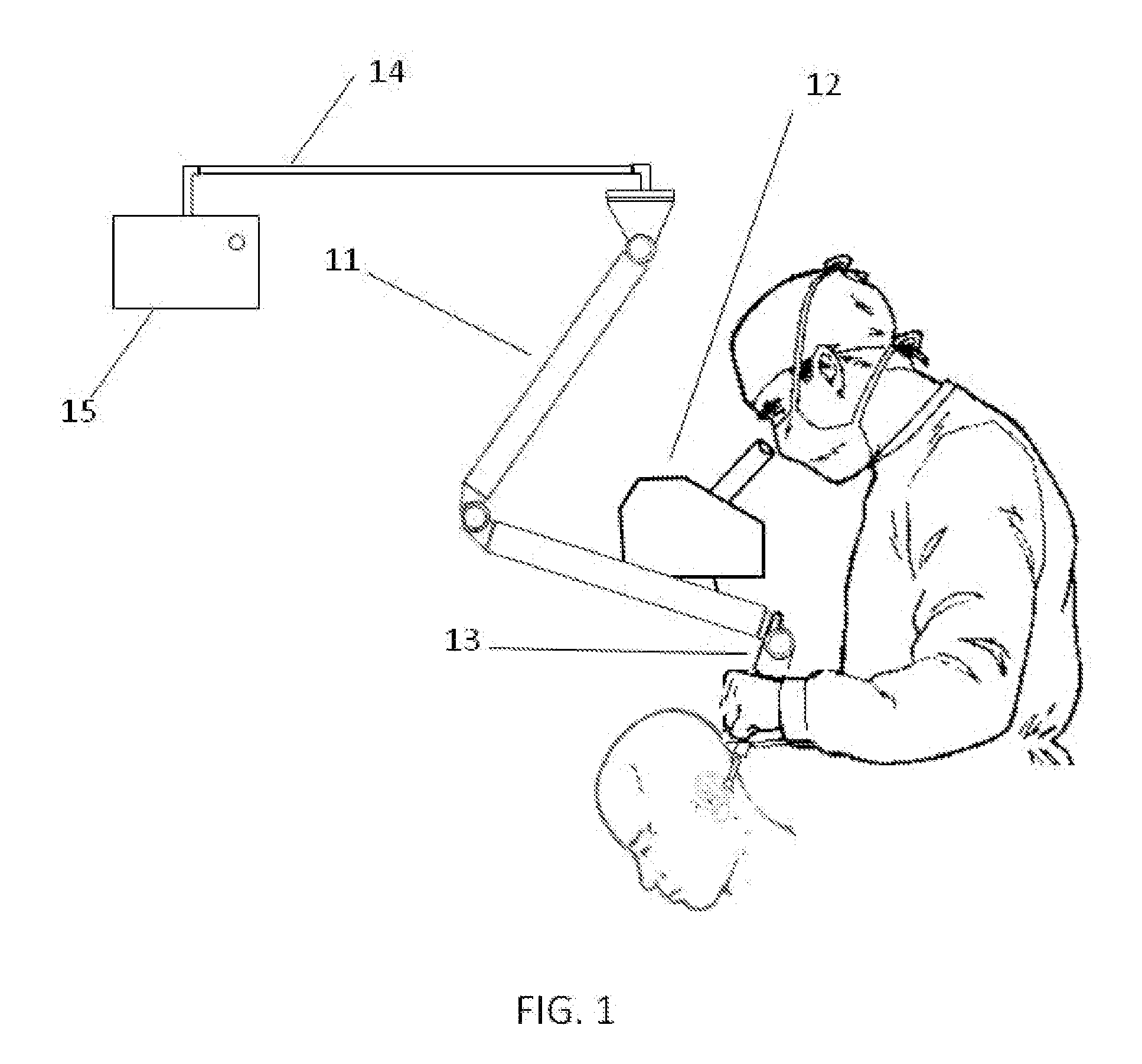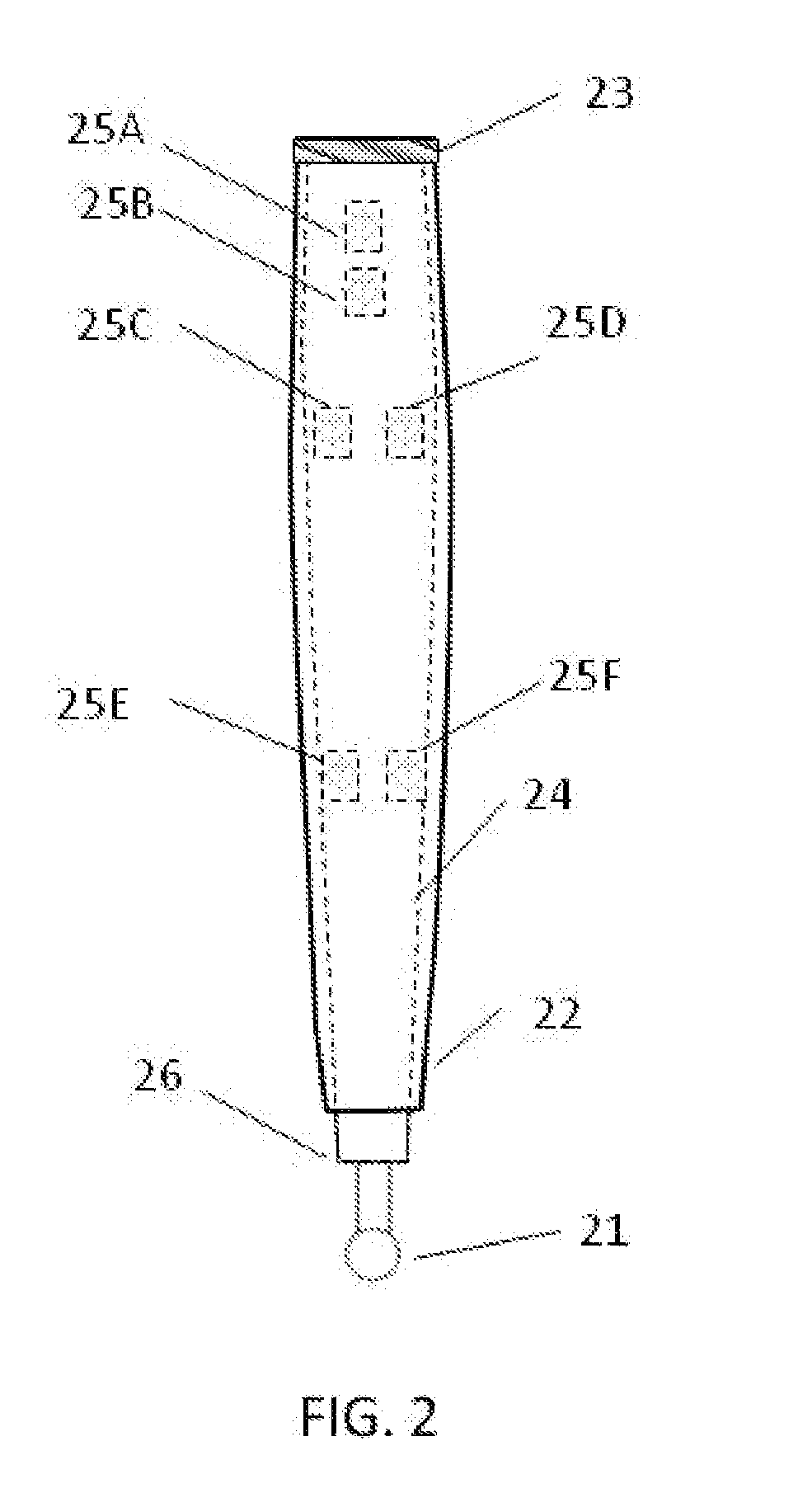Efficient Sculpting System
a sculpting system and efficient technology, applied in the field of efficient sculpting system, can solve the problems of inability to achieve the prior art of manually manipulating and robotically monitoring surgical drills, inability to achieve optimal drill rpm, so as to reduce the operational time and attendant fatigue of surgeons, the effect of reducing the operational cos
- Summary
- Abstract
- Description
- Claims
- Application Information
AI Technical Summary
Problems solved by technology
Method used
Image
Examples
Embodiment Construction
[0036]FIG. 1 illustrates an articulated coordinate measurement machine (ACCM) 11 as the tracking device in lieu of other candidates such as infrared optical trackers with three active infrared light emitting markers on the tool. The ACCM 11 consists of a configuration of seven joints with high resolution encoders, which permits the location and orientation of the drill burr to be tracked. The ACCM 11 affords the opportunity to instill high accuracy in the passive tracking system. Well established kinematic calibration techniques, which involve regression analysis and joint mapping techniques, permit volumetric measurement accuracies of 0.0005″. Thermal and gravity models may be employed to compensate for the thermal expansion and distortion and load deflection of the ACCM structure. However, an ACMM structure consisting of composite materials, which are extremely stiff and have very low thermal expansion coefficients, may avoid thermal and load deflection compensation since the stru...
PUM
 Login to View More
Login to View More Abstract
Description
Claims
Application Information
 Login to View More
Login to View More - R&D
- Intellectual Property
- Life Sciences
- Materials
- Tech Scout
- Unparalleled Data Quality
- Higher Quality Content
- 60% Fewer Hallucinations
Browse by: Latest US Patents, China's latest patents, Technical Efficacy Thesaurus, Application Domain, Technology Topic, Popular Technical Reports.
© 2025 PatSnap. All rights reserved.Legal|Privacy policy|Modern Slavery Act Transparency Statement|Sitemap|About US| Contact US: help@patsnap.com



